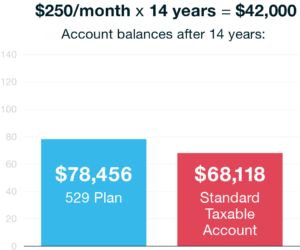Live in Michigan? Have any Solar Tax Questions? Contact ATS Advisors today
Michigan is a state where having alternative energy sources could save you a great deal of money. With warm summers and cold winters, ensuring you have a solar panel system could help to save thousands of dollars a year. The key is finding a system that you can afford and will continue to lower your electricity rate through the years. In our guide providing the best Michigan solar incentives, we provide:
- Why solar installations make sense
- Rebates to help you save money on your solar energy system
- Tax incentives that can help make a solar system possible
Although this is true, the question still remains: Is there a Michigan Solar Tax Credit 2022 ?
Michigan has no state-specific tax rebate program, there are local incentives for solar projects and the federal programs that help to keep down the cost of solar panels.
The Best Solar Incentives, Tax Credits, and Rebates in Michigan
The best solar incentive in Michigan is the Federal Solar Investment Tax Credit (ITC). This program is a great way to help homeowners keep energy costs down and get a sizable tax return the year they put their system in place.
| Incentive | Summary | End Date |
| Federal Solar Tax Credit (ITC) | Michigan residents can take advantage of the Federal Solar Tax Credit and get a discount of 30% applied to their tax returns. If you purchase $20,000 worth of solar panels, you can get a credit of $6,000 on your next tax return. Remember, this does require you to come out of pocket first. Read More | December 31st, 2032 |
| Net Metering | Net metering allows homeowners that create excess energy to use it as a credit on their next electric bill. Although net metering is not mandatory in Michigan, many providers take advantage of it and offer fair rates. | None |
| Commercial Loan Programs | For government and commercial solar installations in Michigan, there are various programs to help improve overall rates and availability of funds. Some of these can help with loans up to $100,000. | None |
| Residential Loan Programs | The Michigan Saves loan program will help homeowners secure financing ranging from $1,000 to $50,000 for their home energy upgrades and installations. The term of this financing can extend as long as ten years. | None |
| Michigan Residential Property Tax Exemption | Property taxes go up when a solar system is installed. With the Michigan Residential Property Tax Exemption, the costs are kept down, and you can upgrade your home without the financial burden of taxes increasing. Read More | None |
Federal Solar Investment Tax Credit (ITC)
The Federal Solar Investment Tax credit is available in all 50 states, Michigan included. This program will give you a discount on your next federal tax return based on your home solar installation cost. This program was recently extended through the end of 2032 as a part of the Inflation Reduction Act.
The ITC allows you a tax credit of 30% of the cost of your solar installation. The solar system will need to be paid out of pocket and in full, with credit being returned and filed against any taxes you owe for that year. If you do not owe taxes the year that you installed your solar energy system, you can simply have this credit follow you until you need it.
Michigan Solar Energy Tax Credit
Michigan does not have a solar energy tax credit or rebate. Some states have an additional savings program that can be very beneficial and help to save additional money, but Michigan only allows for federal savings in this category. As we have mentioned, these programs can be adopted at any time, so it’s worth checking how they change through the years.
Michigan Solar Sales Tax Exemption
There is no tax credit for a residential solar system purchase in Michigan. You will still be subject to the 6% sales tax for your new solar power system purchases.
Michigan Solar Property Tax Exemption
Property taxes will increase with the installation of a solar system in Michigan. Luckily, a program will make your property taxes stay the same even after your solar installation. The solar property tax exemption ensures that even with this $20,000 or more upgrade to your home, your assessed value does not change, and taxes should remain level.
Michigan Net Metering
Michigan net metering creates more energy than your home needs and supplies some of that energy back to the utility company or reserves it when you need it the most. Most homeowners find that their solar system does not create enough energy on cloudy days or at night. Therefore you can bank some energy with the local utility company and have it offset your total costs.
The net metering program in Michigan is pretty good. The state does not mandate a certain amount of payment per kilowatt hour, and they don’t even require companies to offer net metering. However, some good programs with companies like DTE energy and others will help lower your total electric cost obligation at the end of every month.
Michigan Saves – Home Energy Loan Program
The Michigan Saves Home Energy Loan Program will help homeowners secure financing for energy improvements to their homes. The size of the loans this program offers range from $1,000 to $50,000, and they have low rates to help save money on interest.
Loan terms on these loans can be as long as ten years.
Lansing Board of Water & Light – Residential Energy Efficiency Rebates
In the city of Lansing, there are additional rebates for homeowners that make their homes more energy efficient. These rebates will vary depending on the type of system you are installing and the size.
The rebate is currently $500 per kW with a max of 4kW. Adding this in addition to the federal tax rebate and a Michigan Saves Home Energy Loan Program, can result in quite a bit of saving.
Commercial Michigan Solar Incentives
The commercial Michigan solar incentives are strong and will allow for a few extra benefits and loan programs that the residential programs do not offer. If a solar panel system could help your company or business with its green initiatives, Michigan is an excellent place to be.
Solar Incentives for Nonprofits and Businesses in Michigan
There are no specific solar incentives for nonprofit organizations in the state of Michigan. However, there are tax relief programs for nonprofits and loan funding programs that will apply to nonprofits and businesses.
USDA REAP Grant
The United States Department of Agriculture offers a REAP grant or Rural Energy for America program. This is in place to help agricultural producers secure renewable energy resources loans. The USDA will help ensure loan financing and grant funding for agricultural producers, making the process straightforward. Simply input your information, and they will be in touch about ways that you can save. Make sure you connect with the USDA at the beginning of your search for solar power, as they can offer tremendous guidance.
Federal Solar Tax Credit for Businesses in Michigan
For a federal corporate income tax return, there is a 30% credit against the cost of any system that was placed into the building during that year. This credit is the best option when looking for large bulk savings in the state of Michigan. Most businesses have a tax burden at the end of the year, and this can help offset that considerably.
The Federal Solar Tax Credit is still one of the best ways to save money on solar energy, and is in place through the end of 2032.
Michigan Commercial Net Metering
Net metering is also available at the commercial level for Michigan businesses and property owners. Net metering for commercial and governmental institutions not only helps with energy efficiency but can also make the building more sustainable and profitable long term.
The state of Michigan does not mandate commercial net metering. However, in the commercial and business sector, there are plenty of programs in place from large energy providers that want to ensure that this solar-created electricity is used properly to power as much of the grid as possible. The solar arrays put in place by commercial and business operations can create large amounts of energy.
Refundable Payroll Tax Credit
The refundable payroll tax credit is for businesses that meet specific requirements for alternative energy. Payroll taxes can be considerably reduced for businesses that take these green energy initiatives, saving thousands of dollars annually.
With this refundable payroll tax credit, you will multiply the payroll amount attributable to qualified employees by the income tax rate for that year. A qualified accountant can help with these programs, but it takes time and attention to detail to set this up.
City of Ann Arbor – Green Power Purchasing
The City of Ann Arbor Green Power Purchasing is designed to help local governments with their out-of-pocket expenses on solar initiatives. This program aims to reduce greenhouse gasses and increase the amount of solar and wind power in the city yearly.
To encourage this, the City of Ann Arbor has incentives and programs that help make this more appealing to businesses and government institutions. The four goals of this program include supporting onsite renewables and battery storage, developing more community solar programs, and launching solar landfill projects.
Michigan Saves – Commercial Energy Loan Program
The Michigan Saves Commercial Energy Loan Program can make it easier to afford a solar panel system for a business or commercial property. It’s smart to compare these loans from the PACE program and other sources to determine the best rate and the best term.
The Michigan Saves program offers considerably higher amounts of funding for businesses than they do for residential installations.
Michigan Local PACE Program
The PACE program allows property owners in the commercial or industrial sector to get financing for energy-efficient improvements to their property. The PACE program requires a $10,000 initial investment into energy-saving improvements.
PACE financing must be in place before starting your commercial solar project to ensure you get the best possible financing.
Why Go Solar in Michigan?
Michigan currently ranks 24th in the nation according to SEIA for being solar-friendly. The cost of installing solar options in Michigan has dropped through the years. Local governments have adopted home energy-saving programs to make it more affordable for homeowners that want to become greener. However, there is still no state savings program, which puts Michigan slightly behind.
A PV or Photovoltaic system will help make you less reliant on Michigan power providers and more self-sufficient. Most home solar systems do not produce enough electricity to power your home and electric vehicle completely, so some programs allow you to continue to move away from the grid and have a more evenly distributed generation of electricity in your home.
As great as it is to be dealing with creating your electricity and saving money, many Michigan homeowners want the system to help with environmental issues. Using a natural resource like wind, sun, or water to generate electricity will help the environment.
Sold on Solar for your home? Get a free quote from local solar installers.










